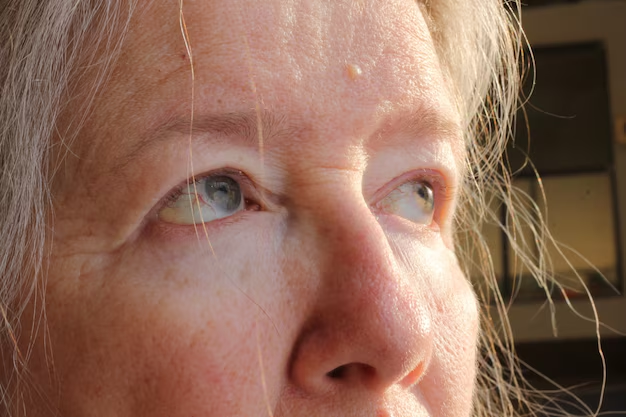What's Behind Cloudy Vision? Understanding Cataracts in the Eye
Imagine looking through a foggy window — that’s how people with cataracts often describe their vision. Cataracts are a common ailment, especially as we age, making this eye condition an important subject for many. In this article, we’ll explore the many facets of cataracts: what they are, why they occur, and what treatment options are available. Let’s clear the fog surrounding this topic and bring eye health into focus.
What Are Cataracts?
A cataract is a clouding of the lens inside your eye, which leads to a decrease in vision. To understand cataracts, consider the eye as a camera. The lens inside your eye focuses light onto the retina, much like a camera lens focuses light onto film. A cataract obstructs how light passes through the lens, resulting in blurred or dimmed vision.
Types of Cataracts
- Nuclear Cataracts: These develop in the center of the lens and may cause the eye to become more nearsighted initially.
- Cortical Cataracts: These form in the lens cortex and are characterized by white, wedge-like opacities that start in the lens periphery.
- Posterior Subcapsular Cataracts: These occur at the back of the lens and can interfere with reading vision and cause glare in bright light.
- Congenital Cataracts: Some people are born with cataracts or develop them during childhood, often in both eyes, due to genetic or environmental factors.
Who Is at Risk?
While cataracts can affect anyone, certain factors increase the likelihood of developing them:
- Age: Cataracts are most prevalent in older adults. As you age, proteins in the lens begin to break down, leading to clouding.
- Genetic Predispositions: A family history of cataracts can increase your risk.
- Health Conditions: Diabetes, obesity, and hypertension may contribute to cataract development.
- Lifestyle Choices: Smoking, excessive alcohol consumption, and prolonged exposure to UV light can heighten cataract risk.
- Medication Use: Long-term use of corticosteroids has been linked to an increased risk of cataracts.
Symptoms to Watch Out For
Cataracts typically develop slowly and without pain, making the symptoms easy to overlook. Here are signs that you might have cataracts:
- Blurred vision: Seeing through a cloudy or foggy lens.
- Sensitivity to light: Experiencing glare, especially from oncoming vehicle headlights.
- Fading or yellowing of colors: Seeing colors less vividly.
- Frequent prescription changes: Needing stronger glasses or contact lenses more often.
Diagnosis: When to See a Specialist
If these symptoms sound familiar, it might be time to consult an eye care professional. A comprehensive eye examination can help determine whether you have cataracts. Eye specialists may use a variety of tests, such as:
- Visual acuity tests: To measure how well you can read a series of letters from a distance.
- Dilated eye exams: To inspect the retina and optic nerve with an ophthalmoscope.
- Tonometry: To measure the pressure inside the eye.
Treatment Options: Clearing the Vision
The only effective treatment for cataracts is surgery. It becomes necessary when vision impairment affects quality of life or daily activities. Cataract surgery is one of the most common and successful surgical procedures performed worldwide.
How Cataract Surgery Works
- Procedure: The cloudy lens is removed from the eye and replaced with a clear, artificial lens.
- Quick Recovery: Most people return to their normal activities within a few days.
- Improvement: Surgery can significantly improve vision clarity and color perception.
For those not ready for surgery, glasses, magnifying lenses, or anti-glare sunglasses might help mitigate cataract symptoms temporarily.
Preventive Measures: Protect Your Vision
While we can’t entirely prevent cataracts, certain lifestyle choices may help delay their progression:
- Wear sunglasses: Protect your eyes from UV rays with sunglasses that block 100% of UVA and UVB rays.
- Quit smoking: Reducing or quitting smoking can lessen the risk of cataracts.
- Eat a healthy diet: Incorporate foods rich in antioxidants like leafy greens, fruits, and vegetables.
- Regular eye exams: Keeping tabs on your eye health with annual check-ups can ensure early detection and treatment.
Summarizing Cataracts: Key Points to Remember
👁️ Key Takeaways:
- Cataracts are a clouding of the eye's lens, causing blurry vision.
- They're most common among older adults but can affect anyone.
- Risk factors include age, genetics, lifestyle choices, and certain health conditions.
- Symptoms include blurred vision, increased light sensitivity, and color fading.
- Diagnosis is done through comprehensive eye exams, including visual acuity tests and tonometry.
- Treatment involves surgical removal of the cloudy lens; it's highly effective.
- To prevent or delay cataracts, wear UV-protective sunglasses, maintain a healthy diet, and avoid smoking.
Empowering Eye Health: Stay Informed, Stay Proactive
Caring for your vision is as essential as any aspect of health maintenance. Understanding cataracts allows you to take proactive steps in preserving eye health. Regular eye exams and being mindful of lifestyle choices are pivotal components of this journey. Remember, clear vision enriches your quality of life, enhancing everything from reading a book to enjoying a sunset. Embrace these insights and keep your eyes focused on the possibilities.
